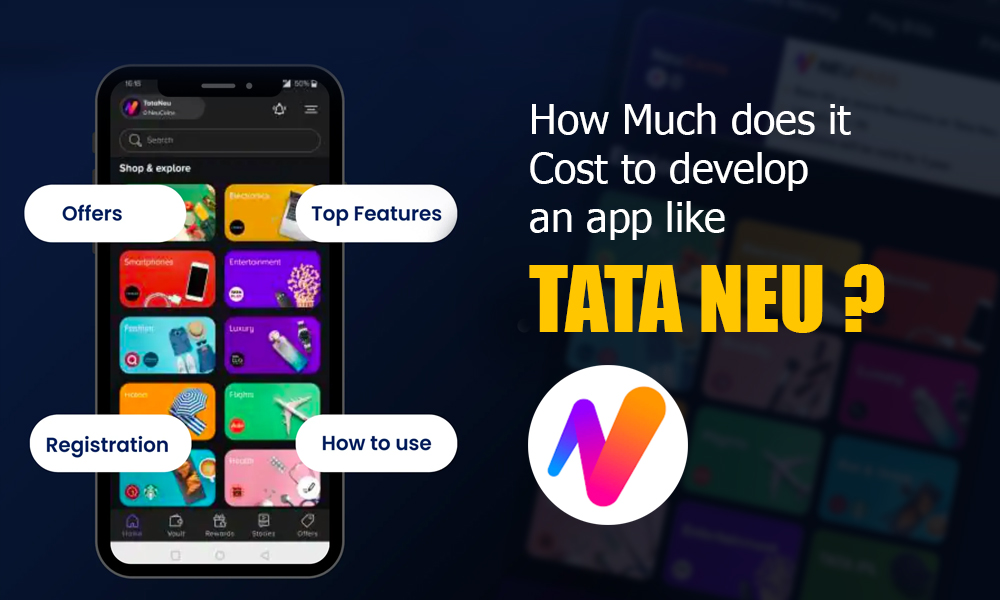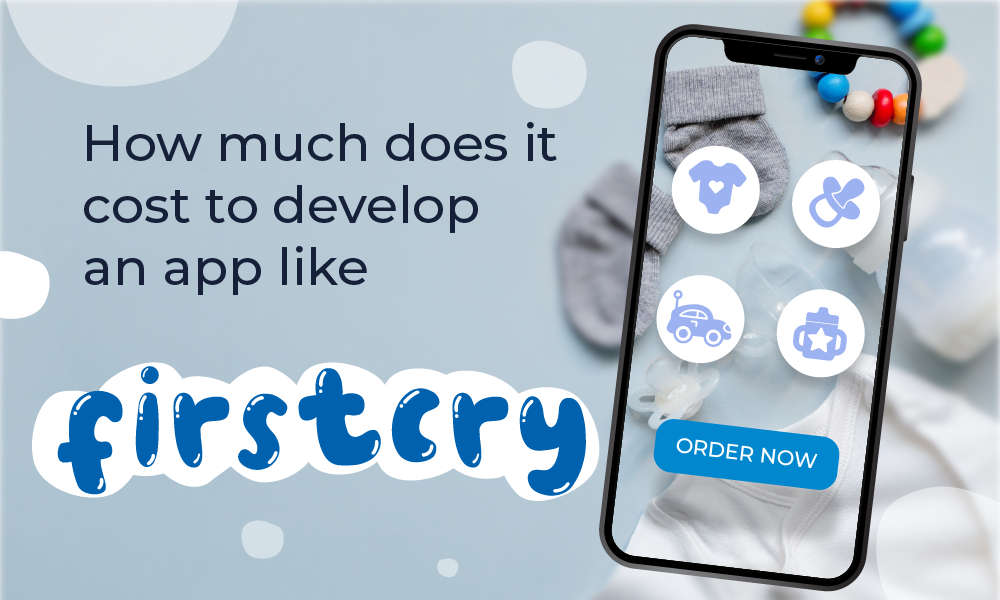Introduction:
Table of Contents
ToggleEver wondered how a tiny screen in your pocket holds the power to summon food, hail a ride, or even land you a date? It’s all thanks to mobile applications, a booming industry predicted to reach a whopping $130 billion by 2025!
But with this gold rush comes a crucial question: React Native or Swift? Which framework paves the path to app-tastic success?
React Native emerges as a cross-platform app development solution, boasting versatility and cost-effectiveness. On the flip side, Swift stands out as the epitome of native app development, offering unparalleled performance within the iOS ecosystem. It’s not just about React Native vs. Swift performance; it’s about aligning your business goals with a framework that ensures success in this fiercely competitive digital arena.
In a world where the right mobile app can make or break a business, choosing the ideal development framework is critical.
So, which framework should you opt for? Let’s dive into this blog and find out!
Understanding React Native and Swift:
Understanding the React Native and Swift frameworks is crucial for making informed decisions in the mobile app development process. Each framework brings its own advantages, ensuring that businesses can tailor their choices to meet their specific needs and goals.
React Native:
React Native emerges as a game-changer, a JavaScript framework that redefines cross-platform development. With the ability to write code once and deploy it seamlessly on both iOS and Android, React Native ensures cost-effective and efficient app development. Its cross-platform capabilities simplify procedures and ensure a consistent user experience across different devices.
React Native utilizes declarative components, enabling developers to create UIs using reusable blocks. This methodical approach not only streamlines development but also nurtures long-term code sustainability. Furthermore, React Native benefits from an active community and numerous pre-existing libraries, accelerating development and reducing the need to start from scratch.
Swift:
Swift, Apple’s native programming language, reigns supreme in iOS app development. Its refined syntax, robust functionalities, and seamless integration with Apple’s frameworks unlock exceptional performance and user experiences. Swift apps feel truly native, leveraging the full potential of iOS hardware and delivering smooth, responsive interactions.
Developers trained in Swift can tap into Apple’s extensive libraries and tools, allowing them to build sophisticated features like augmented reality, haptic feedback, and advanced animations. Additionally, Swift’s focus on safety and security makes it the preferred choice for apps handling sensitive data.
Comparison: React Native Vs Swift
- React Native Vs.Swift Performance
When it comes to app development, the choice between React Native and Swift significantly impacts performance. Let’s delve into the performance benchmarks of these frameworks, exploring differences in speed, responsiveness, and overall efficiency.
- React Native:
Speed and Responsiveness: React Native impresses with its cross-platform efficiency, allowing apps to run seamlessly on various operating systems. The framework ensures competitive speed and responsiveness, making it suitable for a wide range of applications.
Efficiency: React Native follows a modular approach, simplifying development and fostering code maintainability. However, its performance may experience slight hiccups in highly graphic-intensive scenariOS.
Advantages:
- Cross-platform adaptability.
- Competitive speed and responsiveness.
- Code reusability for efficiency.
Limitations:
- Potential performance lags in graphics-intensive operations.
- Swift:
Speed and Responsiveness:
Swift, being Apple’s native language, excels at delivering optimal performance within the iOS ecosystem. It ensures exceptional speed and responsiveness, providing users with a seamless and native experience.
Efficiency:
Swift’s efficiency lies in its ability to leverage the full potential of iOS hardware, resulting in smooth interactions. However, its platform specificity may lead to longer development cycles for cross-platform projects.
Advantages:
- Native excellence for iOS development.
- Unparalleled speed and responsiveness.
- Seamless interactions with iOS hardware.
Limitations:
- Platform-specific nature may extend development timelines.
React Native Vs. Swift Performance Comparison Table:
| Criteria | React Native | Swift |
| Cross-Platform Adaptability | High | Limited |
| Speed and Responsiveness | Competitive | Exceptional |
| Code Efficiency | Modular approach | Platform-specific advantages |
| Graphics-Intensive Performance | Slight lags | Optimal performance |
2. Development Time and Cost:
When deciding between React Native and Swift for your mobile app development, understanding the associated development time and costs is paramount.
- React Native:
Development Time and Costs:
React Native, with its cross-platform efficiency, often reduces development time, thanks to shared codebases. This results in cost savings, making it an attractive choice for businesses aiming for a broader user base across different platforms.
Factors Influencing Timelines and Expenses:
The modular nature of React Native expedites development, but factors like project complexity and platform-specific functionalities can influence timelines and costs.
Resource Requirements:
React Native benefits from a broader skill pool due to its JavaScript foundation, reducing the need for highly specialized developers.
- Swift:
Development Time and Costs:
Swift’s native focus ensures optimal performance but may extend development time, especially for cross-platform projects. This could result in higher costs for businesses.
Factors Influencing Timelines and Expenses:
Swift’s platform specificity and the learning curve associated with its intricate syntax can impact project timelines and costs.
Resource Requirements:
Swift demands specialized expertise in iOS development, potentially limiting the available talent pool.
React Native Vs. Swift Development Time and Cost Comparison Table:
| Criteria | React Native | Swift |
| Development Time | Generally Reduced | Potentially Longer |
| Costs | Cost-Efficient | May be Higher |
| Factors Influencing Timelines | Project Complexity, Platform-specific Functionalities | Platform Specificity, Learning Curve |
| Resource Requirements | Broader Skill Pool (JavaScript Foundation) | Specialized iOS Development Expertise |
3. Community Support and Ecosystem :
- React Native:
Community Support:
React Native thrives in a vast and engaged community, contributing to its continual improvement and evolution. The community actively participates in forums, discussions, and knowledge-sharing platforms.
Libraries, Tools, and Resources:
The React Native ecosystem offers a plethora of libraries, tools, and resources. Developers benefit from a rich repository of pre-built components, streamlining development and reducing time-to-market.
Importance of a Robust Ecosystem: A thriving ecosystem enhances collaboration, encourages innovation, and ensures developers have access to the latest tools and resources. This is particularly vital for React Native app development companies aiming for efficiency and excellence.
- Swift:
Community Support:
Swift benefits from the support of Apple’s well-established developer community. While more platform-specific, the community actively contributes to the language’s growth and enhancement.
Libraries, Tools, and Resources:
The Swift ecosystem, while focused on iOS, provides a comprehensive set of libraries and tools. Developers can leverage Apple’s resources to create high-performance, native iOS applications.
Importance of a Robust Ecosystem: For Native App Development Companies, a robust ecosystem ensures optimization for the iOS platform, granting access to cutting-edge tools and resources, ultimately influencing the app’s success.
React Native Vs. Swift Community Support and Ecosystem Comparison Table:
| Criteria | React Native | Swift |
| Community Support | Vast and Engaged | Well-Established Apple Community |
| Libraries, Tools, and Resources | Abundant | Comprehensive, iOS-Focused |
| Importance of a Robust Ecosystem | Encourages Innovation, Collaboration, Access to Latest Resources | Optimizes for iOS, Access to Cutting-Edge Tools |
Factors Influencing the Decision:
- Project Requirements:
As businesses strive for excellence, understanding the nuances of these popular mobile app frameworks is essential. React Native, recognized for its cross-platform capabilities, and Swift, Apple’s dedicated language for native iOS app development, present distinct advantages. Let’s explore how aligning framework choices with project needs can be a game-changer.
Key takeaway pointers:
- Aligning Frameworks with Project Needs:
Choosing a mobile app framework that seamlessly fits project requirements is crucial. For cross-platform development, React Native shines by enabling simultaneous iOS and Android app creation, offering versatility for a broader audience.
- ScenariOS Favoring React Native:
Opt for React Native for cost-effective development and quick time-to-market. It’s an ideal choice for businesses partnering with a React Native App Development Company, targeting diverse devices and operating systems.
- ScenariOS Favoring Swift:
Swift excels when prioritizing a polished, native iOS experience with top-notch performance. It’s perfect for businesses emphasizing user interaction and seeking a customized, platform-specific application.
- Mobile App Development Cost Considerations:
React Native proves cost-effective with its cross-platform capabilities, enabling efficient development. Swift may incur slightly higher costs, justified by its iOS performance optimization for specific projects.
- React Native vs. Swift Performance:
While both React Native and Swift deliver strong performance, the choice should align with project goals. Conduct thorough performance assessments based on specific app requirements for an informed decision.
- Considering Popular Mobile App Frameworks:
React Native and Swift rank among the most popular frameworks, excelling in distinct domains. Evaluate community support, developer resources, and ongoing updates when making your framework choice.
- Team Expertise:
A development team’s expertise is one of the most critical factors in the success of any software project. A team with a deep understanding of the technologies, tools, and processes involved in software development is more likely to produce high-quality software on time and within budget.
Key Takeaway Pointers:
- Efficiency via React Native:
Expertise in React Native streamlines development by enabling code reuse across platforms, ensuring faster delivery without compromising quality.
- Native App Excellence:
Mastery in native app development, like Swift for iOS, ensures high performance and impeccable user experiences, optimizing platform capabilities.
- Cost-Efficiency Balance:
Skilled teams navigate development costs adeptly, striking a balance between quality and budget, maximizing the project’s value.
- Informed Choices:
Understanding React Native vs. Swift Performance guides informed framework choices, aligning with project-specific requirements and goals.
- Versatility Across Frameworks:
Proficiency across popular frameworks empowers tailored solutions, leveraging the strengths of each framework for diverse project needs.
3. Future Scalability and Maintenance:
When considering the long-term success of your mobile app, future scalability and maintenance are pivotal aspects to address. The choice between React Native and Swift significantly influences how seamlessly your app can evolve and adapt to changing needs over time. As a mobile app development company, understanding the scalability and maintenance capabilities of each framework is paramount for sustained success.
- React Native’s Scalability:
React Native excels in scalable app development with streamlined updates and modular architecture for easy feature integration. Ideal for businesses seeking adaptable mobile applications that can evolve efficiently.
- Swift’s Native Advantage:
Swift, a native iOS language, ensures optimized performance and streamlined maintenance. Its platform-specific nature benefits businesses aiming for a refined iOS experience with lasting efficiency.
- Cross-Platform Maintenance
React Native simplifies cross-platform maintenance, enabling cost-effective and time-efficient updates. Perfect for businesses targeting diverse audiences across iOS and Android devices.
- Performance Considerations:
Swift’s native approach yields slightly faster execution, while React Native strikes a balance between performance and cross-platform compatibility. It is crucial for businesses to prioritize a wider audience reach without compromising the user experience.
- Cost-Efficiency in Maintenance:
React Native’s cross-platform advantage contributes to cost-effective maintenance. Swift, though potentially incurring higher costs, justifies the investment with optimized performance, offering value for specific projects.
4. Mobile App Development Cost:
When choosing between React Native and Swift, mobile app development cost is a crucial factor to consider. Both frameworks have their own pricing structures and associated expenses, and understanding these nuances can help you make a budget-conscious decision.
React Native:
Cross-platform Advantage: React Native’s ability to build apps for both iOS and Android with a single codebase translates to significant cost savings compared to developing separate native apps for each platform. This can be particularly beneficial for startups and businesses with limited budgets.
Estimated React Native Development Costs
| App Complexity | Approx. Cost Range |
| Simple app | $50,000-$75,000 |
| Medium-complexity app | $75,000-$150,000 |
| Complex app | $150,000+ |
Faster Development:
React Native’s pre-built components and hot reloading feature allow for faster development cycles, leading to reduced development time and associated costs.
Lower hourly rates:
Hiring React Native developers can be more cost-effective compared to Swift developers, especially in regions with lower labor costs.
Swift:
Superior Performance:
Swift’s native development approach offers superior performance and smoother animations, especially for graphics-intensive and high-performance apps. This can be crucial for gaming apps, AR/VR experiences, and other demanding applications.
Estimated Swift development costs
| App Complexity | Approx. Cost Range |
| Simple app | $75,000-$100,000 |
| Medium-complexity app | $100,000-$200,000 |
| Complex app | $200,000+ |
Deep iOS integration:
Swift’s tight coupling with iOS provides access to the latest features and functionalities offered by Apple, giving your app a competitive edge.
Higher developer rates:
Hiring experienced Swift developers typically comes with higher hourly rates compared to React Native developers.
What’s best?
The ideal framework for your project depends on your budget constraints and performance requirements. If cost is a major concern, React Native might be the more cost-effective option, especially for simpler apps. However, if your app demands superior performance and native features, Swift might be worth the higher investment.
Making the Decision:
When comparing Swift and React Native for app development, their strengths become apparent in different scenariOS. Swift stands out for iOS-exclusive apps, excelling in intense graphic processing and memory management, making it ideal for platform-specific features.
On the other hand, React Native shines for cross-platform development, enabling cost-effective and quick deployment for both iOS and Android from a single codebase. It’s advantageous for startups and small teams due to its simplicity and code reusability, allowing swift changes and updates. React Native’s hot reloading feature accelerates deployment speed, catering to businesses aiming for broad user reach across various platforms.
In contrast, Swift guarantees efficient memory usage and performance for projects demanding iOS exclusivity and intensive graphics.
Understanding these distinctions will help businesses align their framework choice with their app’s unique requirements, ensuring optimal development and deployment strategies.
Real-Life Examples:
- Walmart:
Walmart witnessed a remarkable 20% increase in conversions upon adopting React Native. The use of hot reloading for swift bug fixes enhances the shopping experience, showcasing the framework’s impact on optimizing performance and user engagement for retail giant Walmart.
- Instagram:
Instagram seamlessly integrated React Native, leveraging its advantages for enhanced features and performance. The platform benefits from faster development cycles and cross-platform compatibility, ensuring a broader reach and improved user experience.
- TikTok:
TikTok delivers captivating experiences with smooth scrolling and animations, courtesy of Swift’s performance optimization. The language handles heavy video processing and user interactions, contributing to TikTok’s engaging and visually dynamic platform.
- Airbnb:
Airbnb prioritizes a personalized user experience, utilizing Swift’s native capabilities for features like AR-powered room tours and seamless booking processes. This integration enhances the overall journey for both hosts and guests on the Airbnb platform.
Let ReapMind Help You in Choosing the Right Mobile App Development Framework:
Choosing the right mobile app development framework is pivotal, and ReapMind specializes in guiding you through this decision, especially when comparing React Native and Swift. At ReapMind, our goal is to ensure your mobile app development journey aligns perfectly with your business vision.
Why ReapMind?
- Team ReapMind begins by delving into your project requirements, ensuring a solid understanding to inform the framework selection process.
- We ensure the chosen framework aligns seamlessly with your vision for user interactions, prioritizing a positive user experience.
- Beyond immediate needs, our focus extends to long-term scalability and viability, future-proofing your project.
- ReapMind provides comprehensive consultations, offering clear comparisons and insights to facilitate an informed decision-making process.
- Our approach involves offering personalized framework recommendations, ensuring alignment with your specific business goals and objectives.
Conclusion:
Wrapping it up!
Now that we’ve explored React Native and Swift, it’s time to outline your mobile app’s development roadmap!
The right framework depends on your business goals. React Native offers cross-platform efficiency for simpler apps, while Swift excels at native performance on iOS.
Picking the right framework is like choosing a guide for your app’s journey. Take a good look at what your app needs and the goals you want to achieve.
At ReapMind, we’ll guide you through the best route, whether you’re navigating cross-platform complexities or exploring uncharted territories in the iOS realm.
Connect with ReapMind today, and let’s sketch out the optimal course for your app’s success.
FAQs:
1. How does the development time compare between React Native and Swift?
Ans: React Native generally speeds up development time as it allows code reuse across platforms. Swift, being platform-specific, may take longer for separate iOS and Android development.
2. Are there any performance differences between React Native and Swift apps?
Ans: While Swift apps may have a slight performance edge due to their native optimization for iOS, React Native has made significant development, and the performance gap has narrowed, making it an ideal choice for many applications.
3. Which businesses benefit more from React Native, and which ones should opt for Swift?
Ans: React Native is ideal for businesses seeking cost-effective cross-platform solutions, while Swift is best suited for companies focusing exclusively on the iOS ecosystem for a seamless user experience.
4. Can existing Swift code be integrated into a React Native project, or vice versa?
Ans: While there are ways to integrate native modules, direct code interchangeability is limited. It’s advisable to choose the framework based on the project’s requirements from the outset.
5. In terms of cost-effectiveness, how does React Native compare to Swift for app development?
Ans: Considering development costs, React Native often proves more cost-effective due to its ability to share code across platforms.


























































































































































